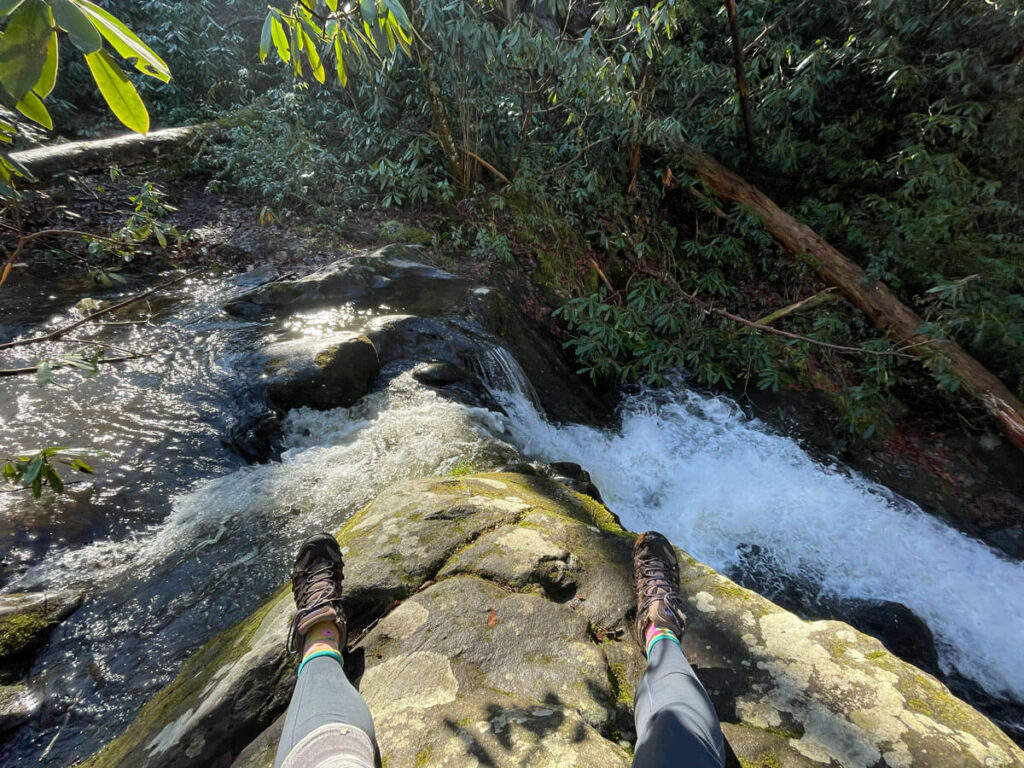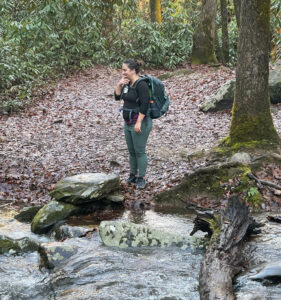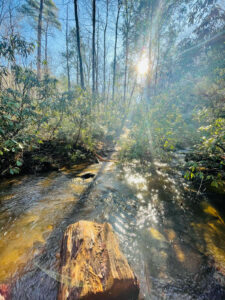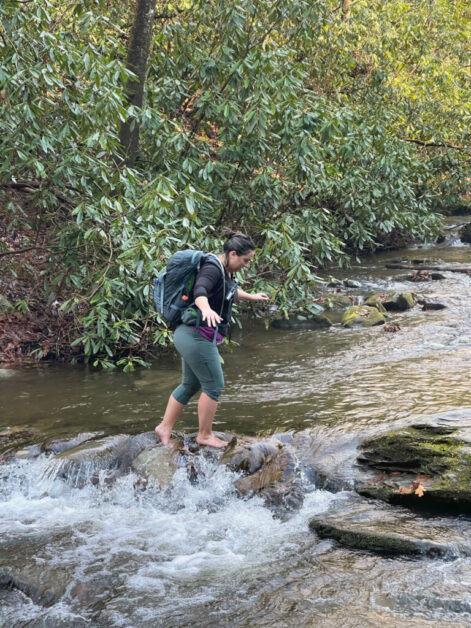Tales from the Trail: Caroline Sullivan
Caroline Sullivan, of Knoxville, Tennessee, is a full stack web developer by day and an avid outdoorswoman by evening and weekend. In fact, she’s hiked more than 300 miles in the Great Smoky Mountains National Park in the past year and is eager to explore more. This mileage has come with quite a few tales from the trail and quite a bit of personal enlightenment.
Caroline is eager to share one of her favorite tales from the trail, as well as six of the lessons she’s learned with boots on the ground. She shares her experience in her own words.
“That Sounds Right”

On a warm Sunday in December, my best friend Hanna and I set out for a 15.4 mile round trip hike from Newfound Gap to Clingman’s Dome. The Great Smoky Mountains had seen quite a lot of precipitation in the week prior. We anticipated ice and snow at the highest point on the Appalachian Trail, so we came prepared with winter gear including long-sleeved thermals, wool socks, and ice spikes.
The Great Smoky Mountains is a favorite destination. In fact, Clingmans Dome is a destination for one of our Top 10 Summit Sunsets to See.
Lesson 1. Know your route ahead of time.
The first bad omen was taking a completely wrong turn on the Foothills Parkway en route to the trailhead. I had blindly asked my phone to navigate without noticing that it had calculated an 8 hour drive, clearly to the wrong destination. My GPS instructed me to turn and I thought that sounded odd. I expressed this concern to Hanna. She shrugged and responded with, “that sounds right.”
We drove nearly ten miles before catching our mistake and turning around.
Lesson 2. Always look online or call to make sure there are no road closures when you’re planning on hiking in the mountains. Especially in the winter.
When we reached Sugarlands Visitor Center just south of Gatlinburg, we anticipated taking a right turn on Newfound Gap Road, a windy mountain drive that is often affected by bad weather. We were met with traffic cones and a “Road Closed” sign.
Lesson 3. Always do your trail research. Always check the hiking book.

We got out our map to look for another nearby hike. Keep in mind: we were prepared for an icy, snowy climb above 6,000 feet. I had mapped out the elevation profile, noted markers along the trail, and packed extra winter gear.
We remembered seeing a trailhead when we passed The Sinks, a scenic location on the Little River. Meigs Creek Trail was the winner. Since our morning had gotten off to such a wacky start, we laughed and decided that we weren’t going to read anything about the trail in my little hiking book. We’d just go in blindly.
Lesson 4. Make sure all your equipment is properly secure.
The first mile of this trail with the word “creek” in the name was fairly swampy, but still an uphill climb with no water crossings. I quickly realized I had no need for my ice spikes.
At about the 1.4 mile marker, we came across our first unbridged water crossing. The current was really moving and the water was high. I decided to try and cross with my shoes on; I barely made it. Hanna opted to remove her shoes and cross.
Hanna is nearly a foot shorter than I am, and we tend to put a good bit of distance between us on the uphill climbs. For this reason we carry walkie talkies to make sure we can always find each other when we need to. Hanna made it to the final rock and threw her arms up to celebrate. In the same motion, the walkie talkie clipped to her backpack was hurled into the water. Trying to act quickly, I hopped over a couple rocks to grab the walkie out of the water. Both my feet became completely submerged, and while I did manage to save her walkie, mine fell in the water as well.
Lesson 5. Always bring extra socks.
Hanna put her shoes back on, and I switched out my wet socks. We journeyed onward, laughing about our misadventure. We walked for about a tenth of a mile before running into yet another unbridged water crossing. We repeated this process FOUR more times. My extra pair of socks got soaked. We slipped on numerous rocks. I jammed a finger catching myself. At one point I shimmed across a downed tree at the top of a 30 foot waterfall.
Lesson 6. The most responsible thing you can do as a hiker is know when to quit.

We were about 2 miles into the trail when we finally reached a water crossing that we couldn’t rock hop our way over. The water would have been up to our thighs. It was then that I finally decided to pull out my little brown Hiking Trails In The Smokies book and looked up Meigs Creek Trail to see what else we were in for.
The 3.5 miles that make up Meigs Creek Trail include 18-20 unbridged water crossings. The first line of the description reads, “If you need rock hopping practice, this is the trail for you.”
To date this is the only hike I’ve ever quit. We turned around, rock hopped back over all the unbridged crossings, and laughed all the way home at our failure.
Learn Lessons with Gear from BivWack Outdoors
What’s the biggest lesson you’ve learned on the trail? One lesson the folks at BivWack Outdoors (and Caroline and Hannah) have learned is that the right gear can make or break your hike. Don’t let that be you.


